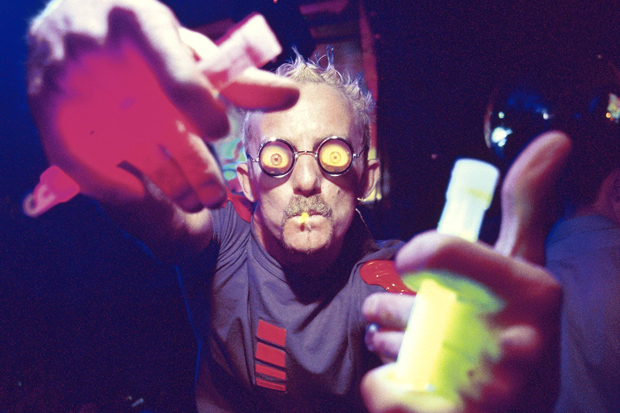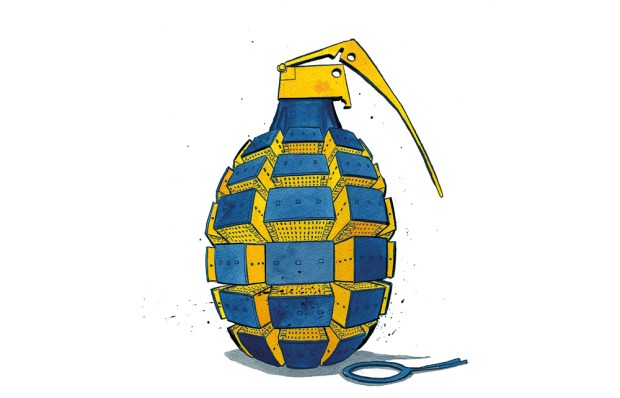Listen
At 19, I dropped out of university to pursue a career as a rave promoter. I went into business with a schoolfriend. We rose through the ranks of party promotion, founded a record label, and started an annual dance music festival. After more than ten years, though, we’ve regretfully decided to close down. And here’s why: young people these days just don’t know how to rave. They are too safe and boring.
Rave, like all youth movements, was meant to be about freedom, rebellion and pissing off your parents. Generations before us had alienated their elders with the help of Elvis or the Sex Pistols. Ravers aimed to start a revolution by dancing all night under the influence of their drug of choice: ecstasy.
The late 1980s and early 1990s were the heyday of commercial rave promotion. In true Thatcherite spirit, quick-witted entrepreneurs worked within and around the law to swiftly organise and publicise parties to entertain tens of thousands of people at imaginative locations. Promoters such as Paul Staines, later known as the libertarian-conservative blogger Guido Fawkes, dazzled the kids and kept most of the home counties awake with vast outdoor events.
That generation is now middle-aged. Instead we have hipsters — a subculture so spineless that it had to borrow its name from its parents. Hipsters are an uptight bunch. They like dance music, but they lack the sense of abandon that made raving so much fun.
Regulatory pressure means that most raves in this country are held in city parks in the afternoon, and wrap up around 10 p.m., which is when a proper rave should start. A grey sky and a light drizzle is considered an acceptable ambience. An agent recently told me that DJs and punters much prefer these hours because they don’t like staying up late.
Last weekend, in a last stand for youthful rebellion in this country, we put on our final event, and it went on until 10 a.m., as any good rave should. We received complaints that there was not enough activity during the daytime. The kids wanted an early night.
Another obstacle is that nightclubs and dance festivals are now ticketed through the same tiresome mechanism as trains and budget airlines. ‘Early birds’ benefit from a discount, so raving is planned months in advance. Gone is the spontaneity of shambling to the party on the spur of the moment.
Organised and particular, hipsters know to detest big business. Instead, they fetishise the authenticity of an independent operator. Yet they expect a level of service that can only be delivered by a multinational corporation. I recently had a telephone conversation with a fully grown adult who was in tears because I couldn’t guarantee that there would be an after-hours shuttle service from the local railway station to my show. ‘But how are we going to get there? It’s going to be the middle of the night and the taxi is £40?’ (You’re going to a three-day rave, darling — it’s the getting home you want to worry about.)
For a long time, we have arranged for a team of kids to help us hang drapes before the rave started. We paid them in free tickets. In previous years, the difficulty was keeping the kids sober long enough that they could still climb a stepladder. This year, I received an email from their co-ordinator asking if we could supply any vegan meals. Also, he added, ‘Any way we can get free Wi-Fi in the chalets… one of the volunteers has some coursework to send?’ Times have changed.
Hipsters drink less and look after them-selves. While I’m thankful that their puritan-ical leanings reduce what we call ‘welfare provision’, I cannot help but think they’re missing the point.
Perhaps the most depressing trend of all is the introduction of the ‘safe space’ policy. In a step borrowed from the earnest world of the university student union, the budding young promoter’s first task is to debate, draft and publish detailed rules to demonstrate that everyone at the party will be properly supported, represented and instructed. It’s the opposite of fun.
Once, the rave was supposed to feel like a distinctly unsafe space, even if the danger was illusory. There were no rules — that’s why we enjoyed it. Staying up all night in a disorienting and vaguely threatening environment, surrounded by questionable people, loud music and a battery of strobe and laser lighting. Staggering around in the dark being sick all over your new trainers. That was the point.
Under the hipsters’ watch, dance music has become tedious and diluted. A monstrous cabal of overpaid circuit DJs titillating a precious and unimaginative bunch of wimpy pseudo-hedonists at a carefully designed ‘safe space’. In broad daylight. If that’s your idea of raving, you can keep it. I’m out.
Got something to add? Join the discussion and comment below.
Get 10 issues for just $10
Subscribe to The Spectator Australia today for the next 10 magazine issues, plus full online access, for just $10.
You might disagree with half of it, but you’ll enjoy reading all of it. Try your first month for free, then just $2 a week for the remainder of your first year.














Comments
Don't miss out
Join the conversation with other Spectator Australia readers. Subscribe to leave a comment.
SUBSCRIBEAlready a subscriber? Log in